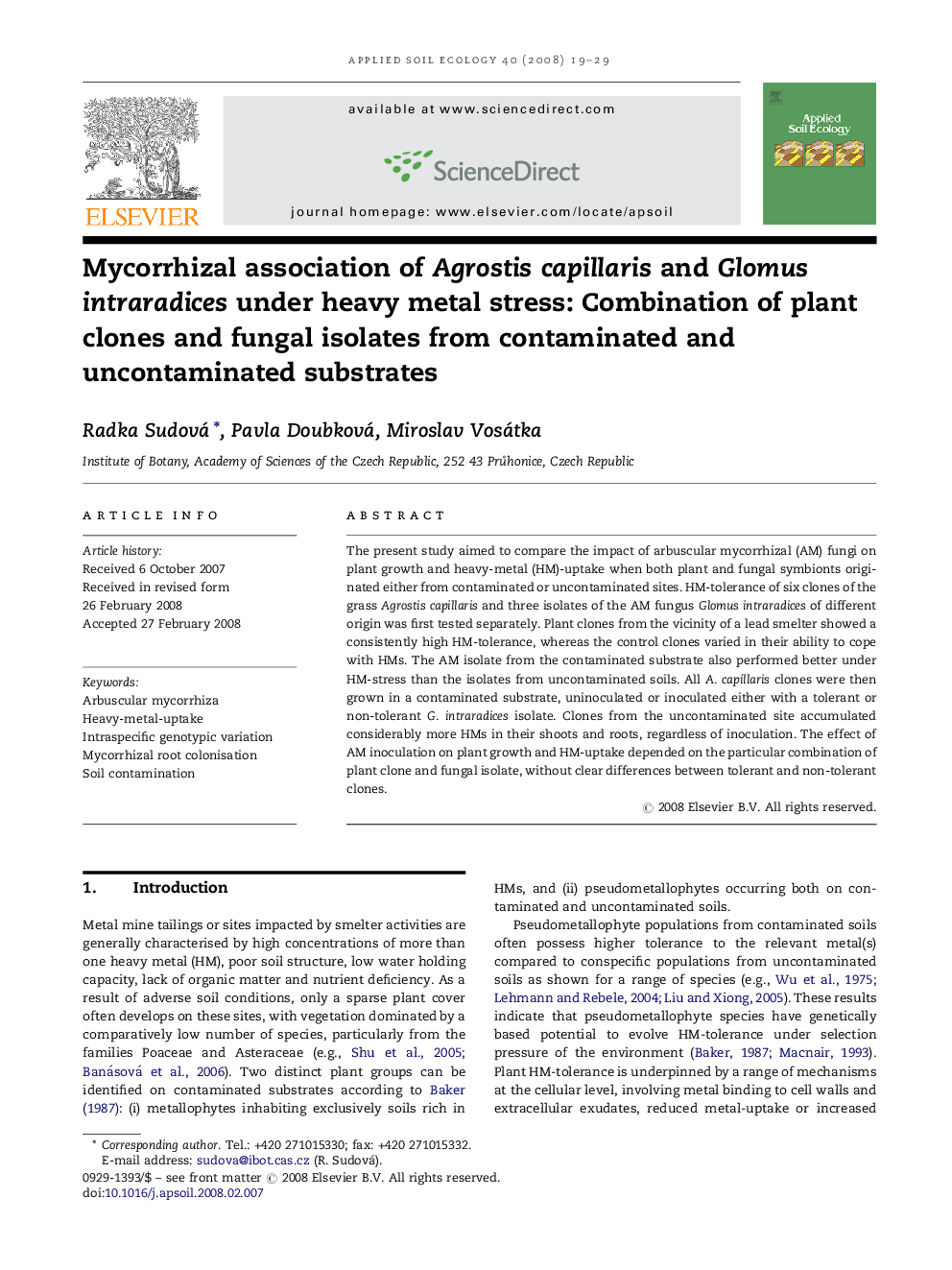| Article ID | Journal | Published Year | Pages | File Type |
|---|---|---|---|---|
| 4383149 | Applied Soil Ecology | 2008 | 11 Pages |
The present study aimed to compare the impact of arbuscular mycorrhizal (AM) fungi on plant growth and heavy-metal (HM)-uptake when both plant and fungal symbionts originated either from contaminated or uncontaminated sites. HM-tolerance of six clones of the grass Agrostis capillaris and three isolates of the AM fungus Glomus intraradices of different origin was first tested separately. Plant clones from the vicinity of a lead smelter showed a consistently high HM-tolerance, whereas the control clones varied in their ability to cope with HMs. The AM isolate from the contaminated substrate also performed better under HM-stress than the isolates from uncontaminated soils. All A. capillaris clones were then grown in a contaminated substrate, uninoculated or inoculated either with a tolerant or non-tolerant G. intraradices isolate. Clones from the uncontaminated site accumulated considerably more HMs in their shoots and roots, regardless of inoculation. The effect of AM inoculation on plant growth and HM-uptake depended on the particular combination of plant clone and fungal isolate, without clear differences between tolerant and non-tolerant clones.
